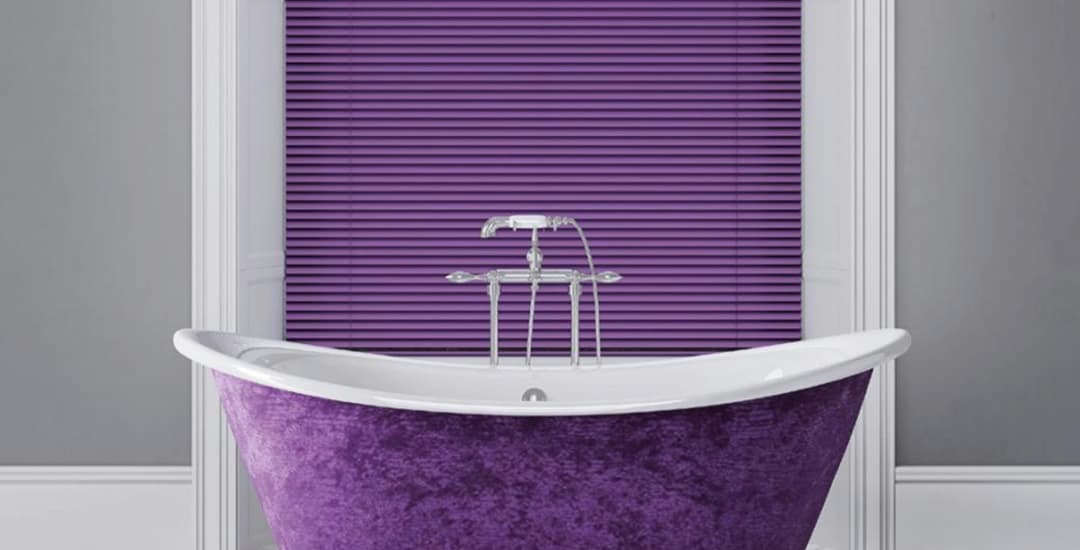
Yes, with the caveat that one part of the Venetian blind isn’t waterproof, which can potentially cause problems over the longer term if the blind gets soaking wet regularly, or if the bathroom gets really heavily steamed up when in use.
The main part of the blind is waterproof and so, Venetian blinds tend to work well in most bathrooms; but this blog post will cover some specific scenarios and exceptions in which a Venetian blind might not be the best choice of bathroom blind, and tell you why this is.
Can you put Venetian blinds in a bathroom as a general rule?
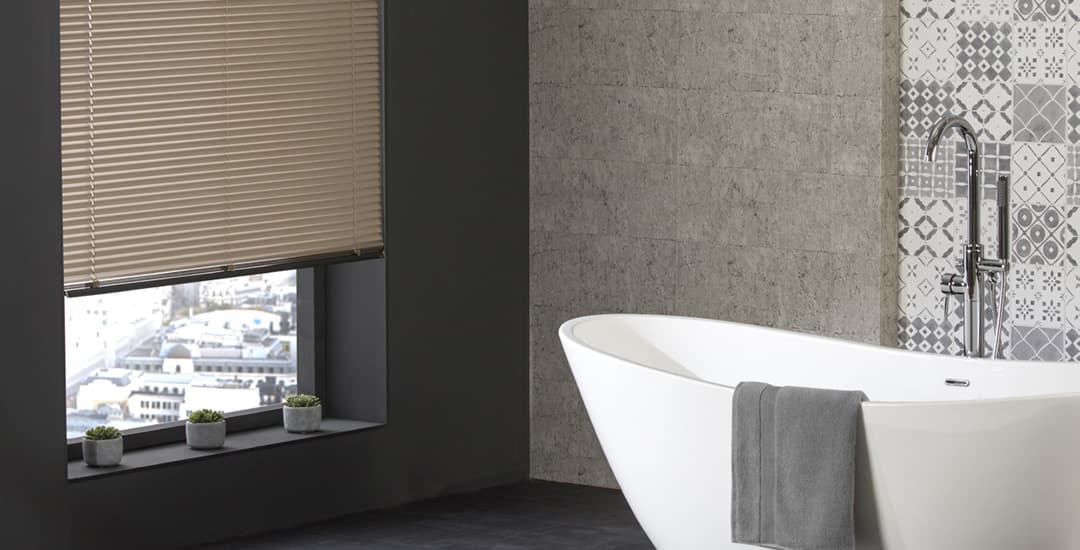
Yes, for most bathrooms, Venetian blinds are a perfectly viable option. The slats of the blind itself are made from aluminium (which does not rust) coated with hardwearing waterproof stove enamel paint.
However, the lift cords and control cord of Venetian blinds are not 100% waterproof; which might be an issue in a small number of bathrooms. Whilst the lift cords and control cords are a very small part of the blind, if they get soaked through regularly and/or don’t get the chance to dry out properly, the material they’re made of can begin to look grimy, deteriorate, and potentially even grow mould or mildew.
If this does happen, they can be cleaned off to an extent, but because they’re not fully waterproof they’re not designed to be washed with soap and water either, plus cleaning the lift cords as they pass through the slats of the blind can be fiddly-to-impossible!
Also, if you have children who absolutely love touching things with filthy hands, Venetian blinds in the bathroom might not be a good idea once more; if the kids handle or touch the blind’s control cord whilst en route to the sink to resolve their current grime issue, again, this will make the blind look visibly dingy in time and possibly ruin the appearance of the blind entirely.
However, for your average bathroom that gets somewhat steamed up while in use but that doesn’t drip with condensation, and that doesn’t tend to look like Waterworld after use in terms of splashes and sploshes, Venetian blinds are fine.
Can you put Venetian blinds in a bathroom with a window right above the sink or bath?
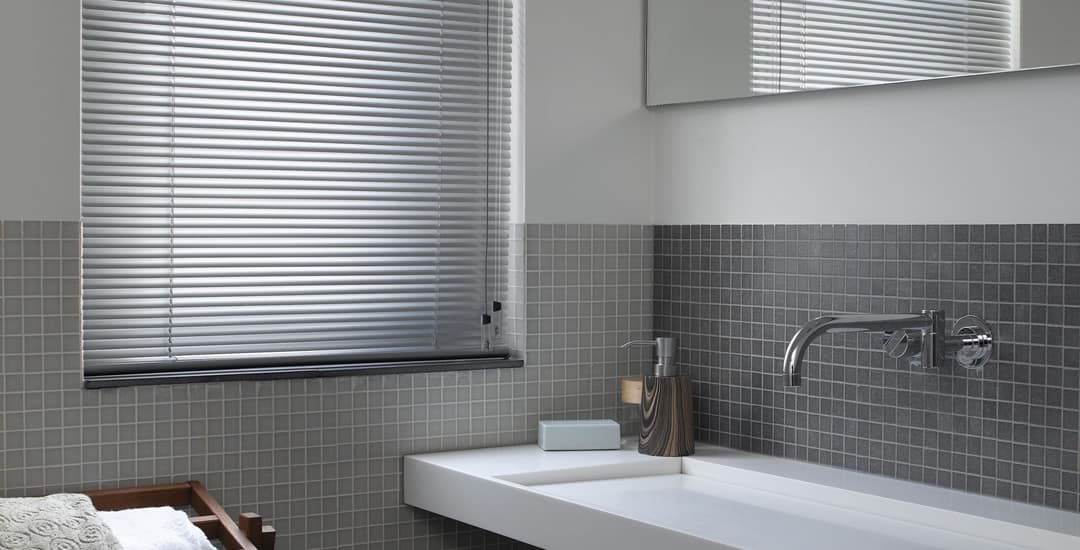
This depends to a large extent on how likely said sink or bath, or user thereof is, to splash the blind. If this isn’t really an issue, then a Venetian blind will be fine. Again though, if the blind’s control cord and lift cords are likely to get splashed a lot, they will also begin to look grimy in time, potentially perish, and may grow mildew.
Can you put Venetian blinds in a bathroom that gets very steamed up or condensated?
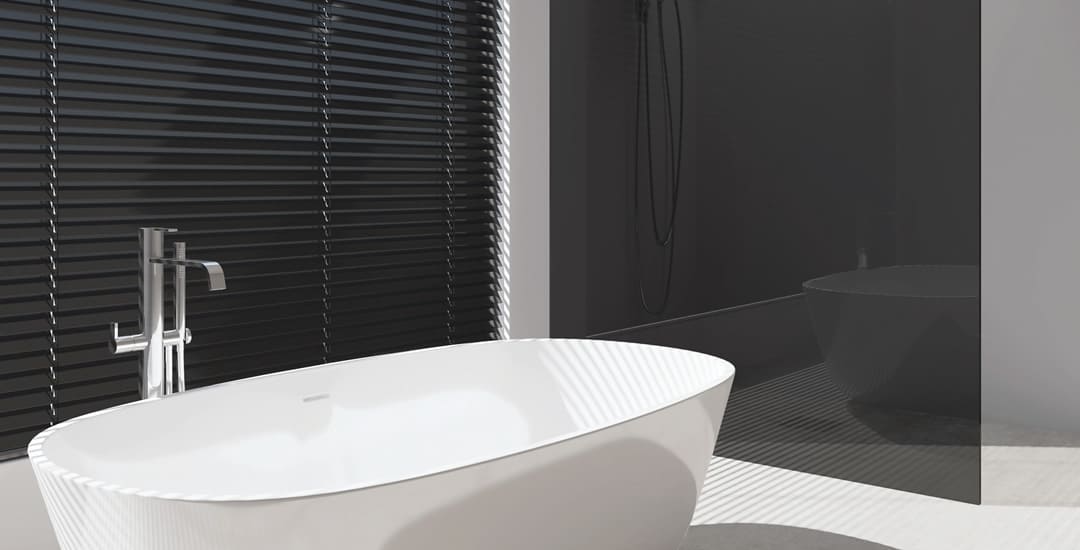
Again, this depends. If the room is only heavily steamed up for a short period of time on each occasion and the blind itself doesn’t become saturated and is able to dry/air out effectively, bathroom Venetian blinds are fine.
However, if the room as a whole is prone to damp, doesn’t have good ventilation, and stays condensated for a long time after use, Venetian blinds might be a no-go.
Can you put Venetian blinds in a bathroom where the water (or child occupant) likes to colour outside of the lines?
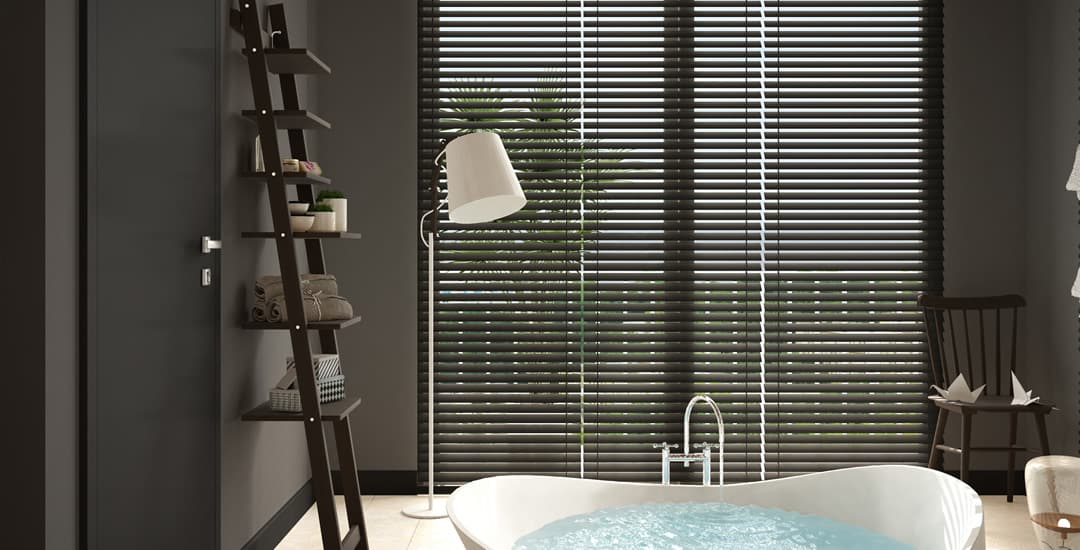
Having your blinds a long way from the sink or bath is all well and good, but do you have children that are likely to try to export water from said intended vessels to said blind either deliberately or inadvertently for any reason?
If so, then your Venetian blinds are likely to get soaked regularly, which over time can again make the lift cords look dingy, cause them to perish, and may mean that they grow mildew.
What alternative bathroom blinds can I consider if Venetian blinds aren’t suitable?
If you have decided that Venetian blinds aren’t likely to be a safe choice for your own bathroom, your best bet it to choose a 100% fully waterproof blind instead. These are roller blinds and vertical blinds made of PVC or vinyl, or faux-wood blinds made of rigid PVC.




